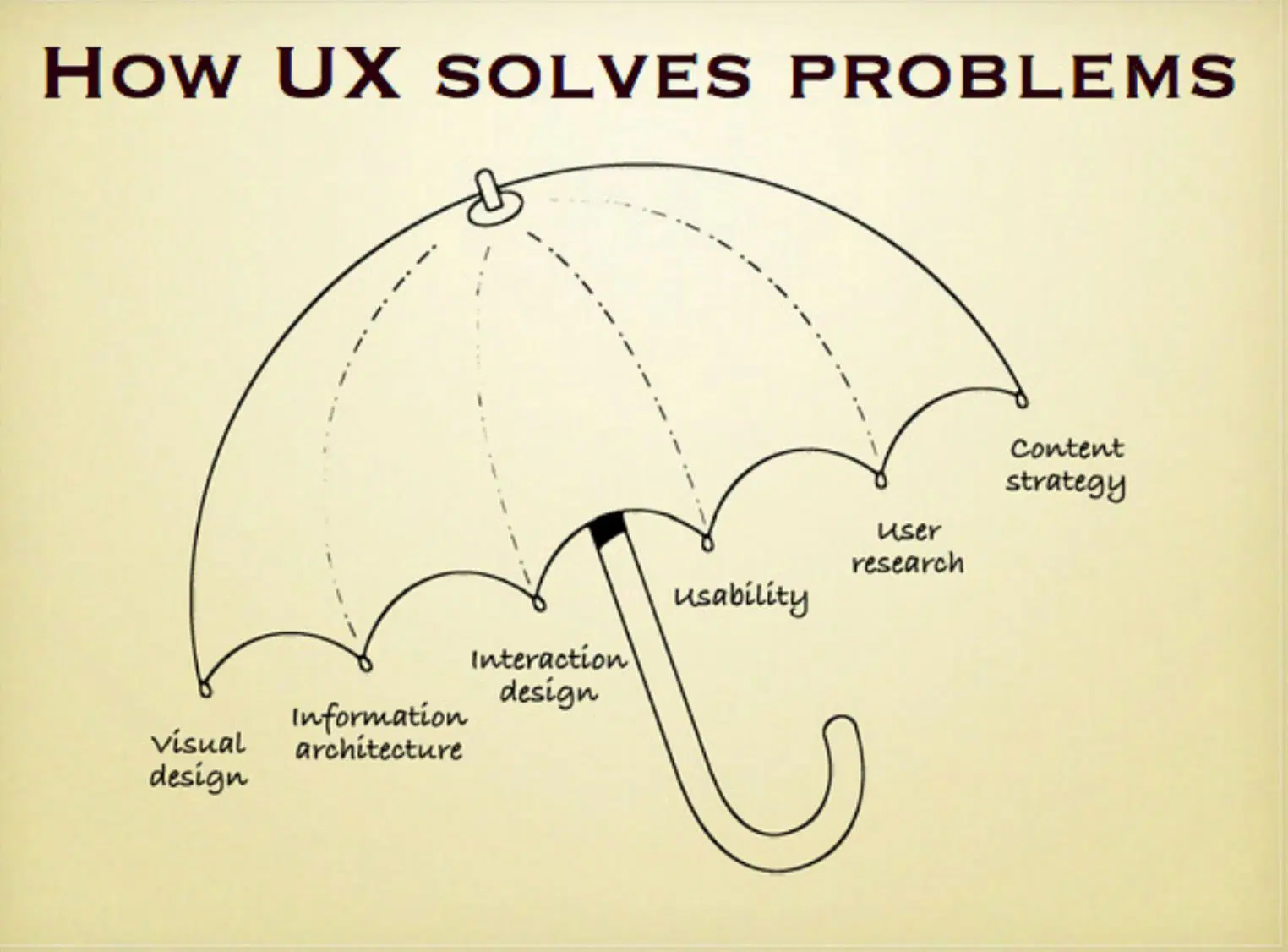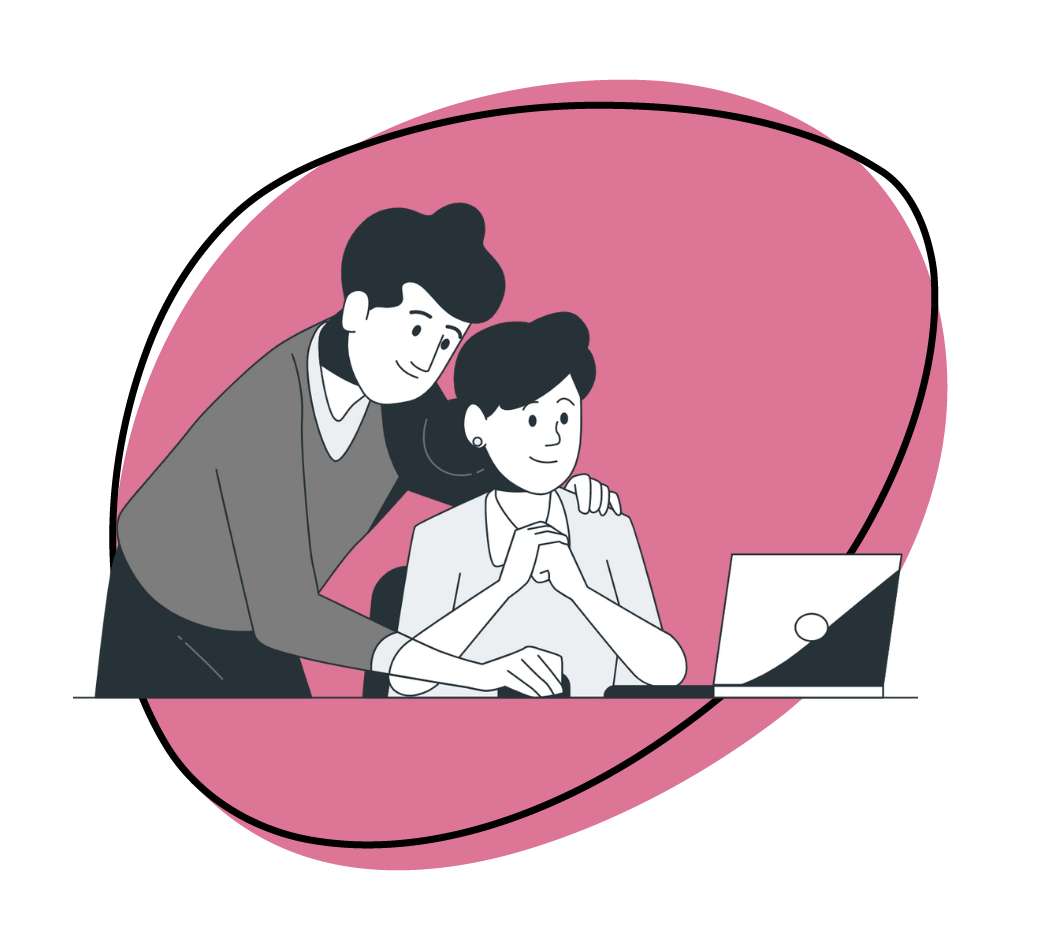We’ve definitely all heard the terms UX and UI thrown around in the design world more than a few times. Since they are both essential parts of the design process, and are closely linked with one another, it’s not uncommon for them to be used interchangeably. However, they are not the same thing.
So maybe you’re asking, well then, what is the difference between UX and UI? Keep reading to find out the difference between UI vs UX.
UI vs UX – What do UI and UX stand for?
If you’ve ever asked yourself, what is the difference between UX and UI? then you’ve come to the right place. Let’s get down to what’s what. To begin with, UX design refers to user experience design.
UI design, on the other hand, refers to user interface design. It’s important for both your UI design and your UX design to coincide with one another, but they achieve this by focusing on different parts of the process and design discipline.
Let’s start with the cliff notes:
UX Design
- User testing
- Data analytics
- Site mapping
- User satisfaction
- Prototyping
- Collaboration
UI Design
- Output devices
- Action buttons
- User controls
- Tools
- Input devices
- Content
- Visual design
UI vs UX: What is User Interface Design?
UI is focused on how a product’s look and function. As outlined above, and in a recent post, Master your UI design with these 7 crucial UI design fundamentals. UI design focuses on the presentation and interactivity. User interface design includes anything that focuses or tests the design’s look, feel interactivity, animation, responsiveness, adaptation to all device types, and implementation with a developer. It is best defined as the access points where a user interacts with design elements.
Well-executed user interfaces facilitate a goal or task by eliminating distractions and any friction that may prevent them from achieving or complete the end goal. The most effective UI designs are simple, consistent, invisible and empower your user. The basic design elements of UI help users intuitively navigate your site, understand the value of your service or products, and make decisions. It’s responsible for taking the product’s development, research, content and layout, and turning it into an appealing, responsive, and easy to navigate experience for users, including:
- Predictable and seamless elements, such as buttons
- Effective navigation, such as clearly labeled icons
- Frictionless and invisible interactions
- Purposeful and clear tasks or goals
- Guided behavior with design patterns, and clear hierarchy and readability
- Key features catch the user’s attention
UI vs UX: What is User Experience Design?
User experience design, on the other hand, focuses on improving the quality of every interaction between a user and the company. A major component of UX design that sets it apart from UI is the emphasis on creating a positive experience while fulfilling a user’s needs. Every decision is made with the end user’s experience in mind, including their perceptions, emotions, and responses to a company’s product, system, or service.
Providing an exceptional and memorable user experience that attracts loyal customers are designed with both the ease of the process, and the overall experience. It’s all about balancing pleasure and functionality. Within seconds of viewing your app, site or product, your user should have a clear understanding of how your interface works and why it’s valuable to them. Often your UX design is a major deciding factor of whether a user becomes a loyal user, or leaves your site for a competitor.
UX design takes place during the development stage. It includes everything involved in the overarching idea of optimizing a product for effective and enjoyable use, such as:
- Competitor & customer analysis
- Product structure & strategy
- Wire-framing and prototyping
- Hands-on user testing, iteration, research, development, content, and prototyping to test results.
- Develop and improve the interaction between a user and all facets of a company.
- Coordinate with UI designer(s) and the developer(s)
- Tracking goals and integration

UX designers ask questions about their end-user so that they can understand who their target is, what they are familiar with, what the users’ expectations are, and how this information can lead them to the end-goal of your site, app or product. Understanding these that guides users seamlessly through a series of tasks. Ultimately, your user experience design should balance aesthetics and functionality. It’s intended to help define your user’s journey in a way that optimizes your business’s success. For more about UX Design, read our recent post, Measuring the Success of Your User Experience Design.
How is UX and UI related?
If you’re wondering if UX and UI are so different, how is UX and UI related? In short, UI design is the driving force of UX design. Together, they measure the usability, the visual design, the structural hierarchy, wireframing, and how well users interact or engage with it. You need both to work well in order to achieve a product that is both functional and visually appealing. Although UX is not UI, they must work in tandem in order for either to be successful. A UX designer is focused on the conceptual aspects of the design process, while a UI designer takes care of more tangible and functional elements.
“UI is the bridge that gets us where we want to go, UX is the feeling we get when we arrive.” – Jason Ogle – Host and producer of User Defenders podcast, Designer at NCM
Exceptional UI can be measured as something that looks incredible. On the other hand, something that is highly functional and extremely easy to use, is an exemplary example of great UX. Think of it this way, have you ever been on a site or an app that looked horrible, but offered a seamless experience? That’s excellent UX, but poor UI. Have you come across an app or site that was absolutely gorgeous, but incredibly difficult to use? That’s excellent UI, but poor UX.
A common analogy used to show the intrinsic link between UX and UI is the restaurant analogy. UI is the table, chair, plate, glass, and utensils, while UX is the food, to the service, parking, lighting, and music. Needless to say, you can’t have one without the other.
So when asking how is UX and UI related? Consider this, you’re probably not going to stay on a website that doesn’t work well, or keep using an app that’s a major eyesore, so neither will your users. A great website, app, or service, then, must effectively execute and blend both UX and UI.
What is good UX?
There isn’t a single answer to the question, what is good UX? There isn’t a formula or one size fits all for designing the best UX experience. Each design is unique. It all depends on your user’s needs and expectations, and the goal of that design. Although there isn’t a defined set of rules, avoiding complicated or clutter designs is a good rule of thumb. No matter what your end goal is, designing simple and straightforward designs with a clean layout and clearly defined process will provide the best results. The interactive portion of your design needs to entice users.
When asking more specifically, what is good UX? And what makes a good user experience? Your goal is to design a process that engages the user while guiding them to complete a desired task or action. The best method to measure what is good UX? Is to consider the why, what and how throughout the design process. The ‘why’ is all about a user’s motivations. Ask yourself, does it relate to a task they want to perform, does it resonate with their values or the target’s specific lifestyle? The ‘what’ addresses the design’s functionality, while the ‘how’ directly impacts that functionality by balancing its functionality with aesthetics.

Effectively using elements that engage your user will increase conversions, reduce the amount of time it takes for your user to reach the end goal and keep your UI out of the way. Consider including the following elements to enhance your user experience:
- Clickable items
- Scrollable items or dropdown menus
- Typable inputs
- Calls to Actions
Zight (formerly CloudApp)
When you’re designing and developing products or services, you want to ensure you have created the best experience. This means ensuring a user can navigate efficiently and naturally throughout your design without being distracted by visual elements.
Powerful designs are all about trial and error, so fail fast, and iterate often. The time you take investing in distilling your design down to the most simplistic and visually appealing design will be well worth it. Effectively blending and executing UI and UX design elements will greatly increase the likelihood of creating a repeat user. Furthermore, it’ll increase the chances that your user will complete targeted or directed actions.
Collaboration, speed, effective communication, and consistency are key throughout every stage of the design process. Zight (formerly CloudApp) offers a variety of features to help enhance your UI and UX design development. Zight (formerly CloudApp) features allow you to create, annotate, and share screenshots, GIFs, video snippets, and screen recordings with others. It can also be easily integrated with a number of other platforms making it the ultimate design tool to streamline the process.
Zight (formerly CloudApp) is compatible with Macs and PC. Install the Zight (formerly CloudApp) Mac App, Windows App, iOS app, or our Chrome Plugin today.












